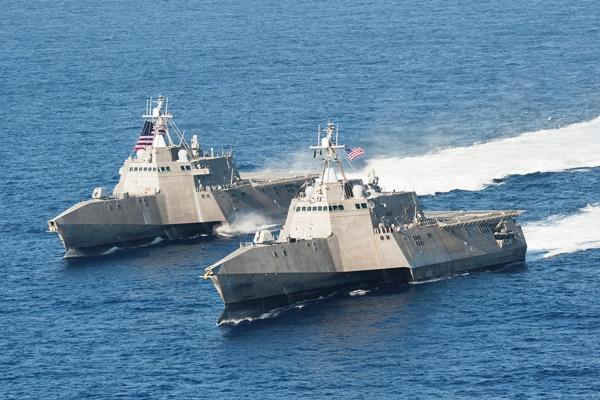The U.S. Navy's director of surface warfare fired back at critics of the littoral combat ship this week, calling on those in the community to "sell the story" of how the ships would improve warfighting.
Rear Adm. Peter Fanta also offered details about how a future frigate design would increase lethality and survivability and reaffirmed the Navy's plan to build the ship.
His comments follow a Dec. 14 memo in which Defense Secretary Ash Carter ordered the Navy to cut the number of vessels it plans to buy from 52 to 40 and select one rather than two variants for future production. Carter said the Navy had overemphasized increasing ship numbers at the expense of other warfighting tools and directed the service to invest more heavily in fighter jets and key munitions.
While Fanta declined to address the memo directly because the fiscal 2017 defense budget has not been finalized, he dismissed criticism of littoral combat ship's survivability and design flaws as bureaucratic sour grapes.
"It's like every other ship," Fanta told an audience Tuesday at the Surface Navy Association annual symposium. "We're building it, we're deploying it, and we're figuring out what it can do."
He praised the success of the USS Fort Worth, now nearing the end of a 16-month deployment in the Western Pacific, saying the ship was doing "amazing things."
"You know what a lot of naysayers' problem is? ‘Did you write the stack of reports that are required to build this ship?'" Fanta said. "Awww."
The program has been plagued by controversy. The USS Freedom, the first LCS delivered to the Navy by Lockheed Martin Corp. and commissioned in 2008, has weathered a series of issues including hull cracks, engine problems and other design flaws. The program received another blow in 2013 with the release of a Pentagon report that found the Freedom was "not expected to be survivable" in combat.
But Fanta compared the problems the ship has experienced to the growing pains other new classes of ships have weathered. He added that the first of the Arleigh Burke-class of guided missile destroyers, the USS Arleigh Burke, had taken years to get ready for commissioning and then nearly had to be towed to Norfolk for the event.
"I've got it. [The LCS is] not perfectly tested. I've got it, it's not perfect," Fanta said. "It's like every other ship we've had."
But the sonar on the ship would significantly increase the Navy's capability against enemy submarines and would be "the envy of that size and shape ship in the world," while deployed, he said.
And the Navy's future frigate, which will build additional protection onto existing LCS designs, would do even more for the fleet, Fanta said. That future design will include both anti-submarine and anti-surface capabilities, he said, as well as the ability to host multiple groups of weapons.
"If you hit the other guy first, he has a hard time killing you," he said. "Put a longer-range weapon on there and get it out there."
The design will also include minor hull modifications to strengthen the structure in order to mount a weapon, though these modifications won't change the hull's size or shape, Fanta said. Survivability modifications will include reinforcement of the ship's structure to better handle incoming rounds and development of an operational strategy to determine a "sweet spot" of where the new frigates should operate, he said.
All this design work is set to take place over the next year and a half, Fanta said.
"These are simple changes we do every single day," he said. "It's not massive changes, it's thinking about LCS differently as we turn it into a frigate."
--Hope Hodge Seck can be reached at hope.seck@monster.com.
Related Video:























